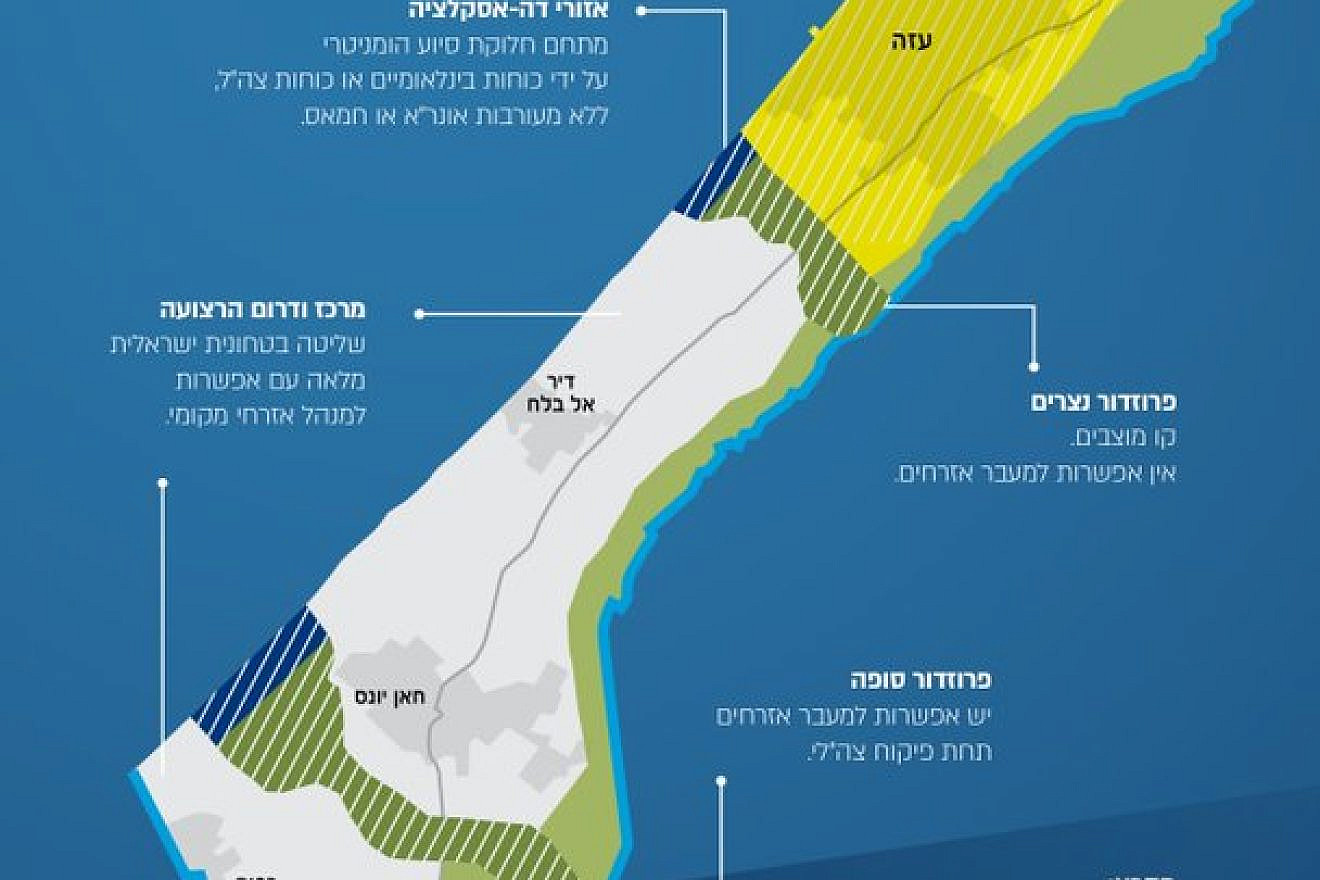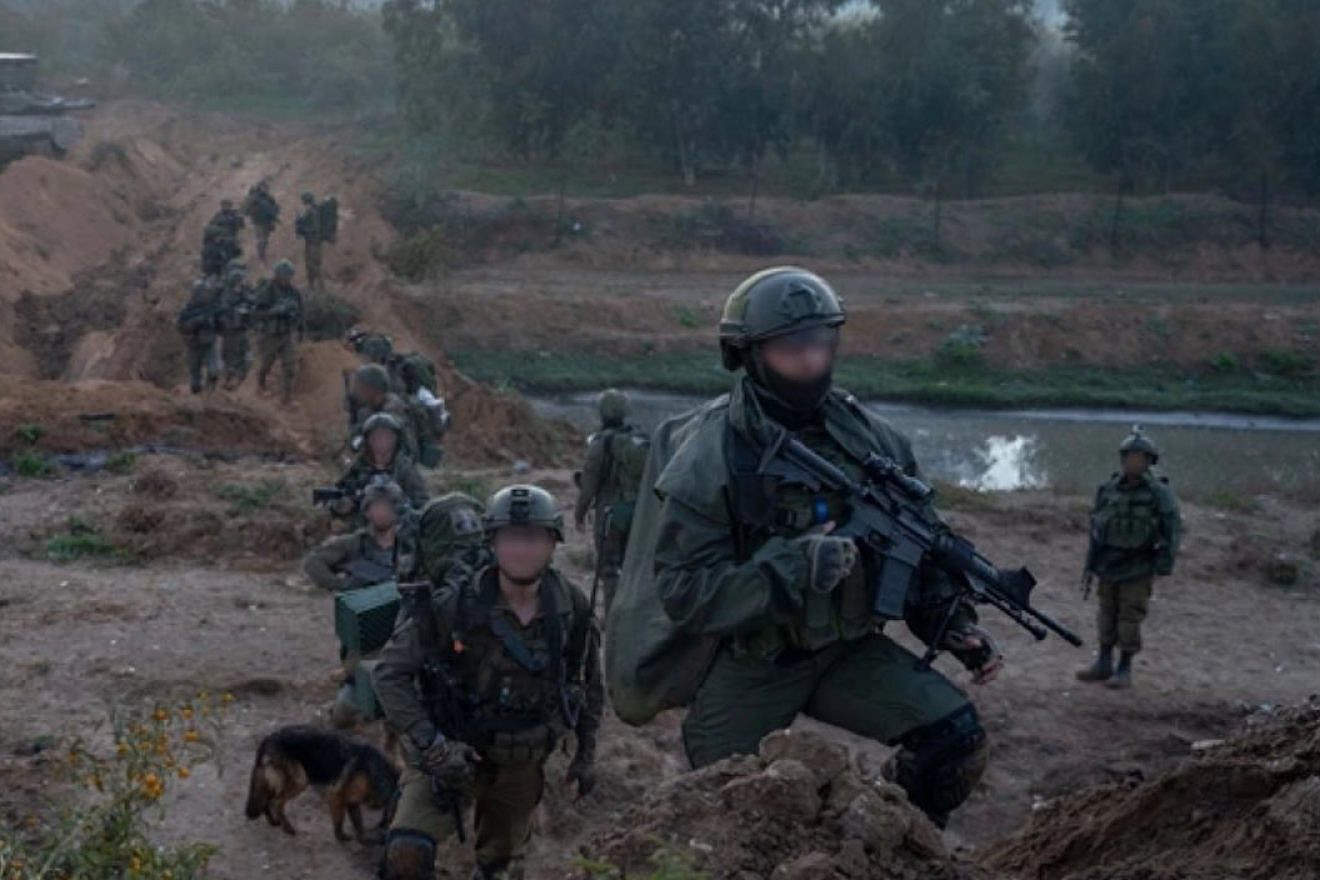As Prime Minister Benjamin Netanyahu comes under increasing pressure to produce a program for “the day after” Hamas in the Gaza Strip, several Likud lawmakers have issued a plan to refocus attention on first defeating the Islamist organization.
Titled “Plan for Victory in the Gaza Strip” and dated Jan. 16, the 102nd day of the war, the plan calls first for the IDF’s continued destruction of Hamas’s “order of battle”—its command structure, fighters, equipment and infrastructure.
The number of Hamas terrorists is estimated at 30,000-40,000, of whom 25% are said to have been killed.
“The achievement is not nothing, certainly if you add the number of wounded and prisoners of the organization, but the campaign is far from over,” the plan states.
The plan underscores the importance of Israeli territorial control of the Gaza Strip, which it proposes dividing into three sections—north, central and south—cut by two security corridors running east to west.
The northern area, where Gaza City is located and which served as Hamas’s power center, is to remain unreconstructed. The central and southern sections will combine Israeli security control with the possibility of full local control of civilian affairs.
The plan calls for two “de-escalation zones” located on the sea sides of the two security corridors where humanitarian aid will be distributed to the civilian population. It also provides for a security perimeter between the Gaza Strip and Israel along which new IDF outposts will be built.
A “mortal blow” to Hamas won’t be achieved without “operational control” of the Strip that will enable “IDF freedom of action similar to what it has in Judea and Samaria,” the program posits.

The authors of the plan are Amichai Chikli, minister of both Diaspora affairs and social equality, and Likud members of Knesset Moshe Saada, Dan Illouz and Boaz Bismuth. They created their plan with the input of security experts.
Israel’s wartime government came under pressure from the U.S. early on, with the Americans insisting on looking ahead to the day after Hamas’s defeat. The White House has made no secret of its desire to see the Palestinian Authority installed in power in Gaza, uniting Judea, Samaria and the Strip under one authority and eventually becoming the government of a Palestinian state.
Recently, pressure has also mounted on Netanyahu from within his War Cabinet as Defense Minister Yoav Gallant and National Unity Party leaders Benny Gantz and Gadi Eizenkot have signaled that formulating a post-Hamas political plan will help the war effort.
Left-wing groups are also hard at work devising strategies to coerce Israel to adopt U.S. proposals.
Netanyahu has been reluctant to lay out a post-Hamas plan. He has limited his comments to rejecting the U.S. solution and calling for Israeli control of the Philadelphi Corridor, Gaza’s border with Egypt, to prevent smuggling.
The pressure on the government motivated the Likud MKs to produce the report, as they grew concerned that talk of the day after would distract from the war effort.
“It is no secret that the Israeli government is under heavy international pressure that may divert us from the path of decisive victory,” Chikli tweeted on Jan. 18. “This could be due to mismanagement of civil and humanitarian aspects, or as a result of a loose grip on the territory that may allow Hamas to restore its power.
“Let us recall that the main goal of the war as defined by the Israeli government is the destruction of the military capabilities and governmental and organizational infrastructure of Hamas and Islamic Jihad in the Gaza Strip, so at the end of the war they will no longer pose a long-term threat to Israel,” he added.
The plan does devote a page to three “guiding principles” for the day after Hamas: 1. No extreme nationalist elements must be allowed to control the Strip; 2. A complete disconnect between Israel and the Gaza Strip; and 3. Rebuilding the Rafah Crossing on the Egypt-Gaza border, giving Israel supervision of goods entering the Strip.
“Workers or goods [from Gaza] will no longer be allowed to enter Israeli territory. Also, Israel must gradually stop the supply of water and electricity until it is completely cut off,” the program says, calling as an initial step for the “demolition and permanent closure” of the Erez Crossing from Israel, located at the northern end of the Gaza Strip.


























